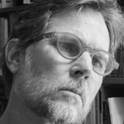
Presentation
Le Corbusier and ‘Psychically Innovating Space’
Le Corbusier: Architecture, Urbanism and Theory
Document Type
Article
Disciplines
Publication Version
Published Version
Publication Date
2-1-2009
Conference Title
Le Corbusier: Architecture, Urbanism and Theory
Conference Date
February 26–28, 2009
Geolocation
(33.95260200000001, -84.5499327)
Abstract
In France, in the first quarter of the Twentieth Century, ‘space’ and ‘psyche’ were uncommon concepts. Both originated in German thought, foreign to a French way of thinking. Still, in the early 1920’s, L’Esprit nouveau, a French review of contemporary visual phenomena co-edited by Charles Eduoard Jeanneret, featured articles on Freud, film, Picasso, Einstein and relativity. Yet implications of these novel perspectives to the formation of space were seldom considered in depth; nor did Jeanneret discuss the concepts in his books on urbanism, architecture, decorative art, and painting that followed. In the late 1930’s, and then immediately following World War II, all of this changed. Space and psyche became common currency in both French architectural and in its popular press, and the conjunction of psyche and space could be said to form the basis of Le Corbusier’s 1946 “Ineffable Space,” a theory of architecture that posits ‘space’ as venustus, delight, in Modern Architecture.
Copyright Owner
Tony Rizzuto
Copyright Date
2009
Language
en
File Format
application/pdf
Citation Information
Daniel J. Naegele. "Le Corbusier and ‘Psychically Innovating Space’" Marietta, GA, United StatesLe Corbusier: Architecture, Urbanism and Theory (2009) p. 45 - 53 Available at: http://works.bepress.com/daniel_naegele/7/

This proceeding is from Le Corbusier: Architecture, Urbanism and Theory (Atlanta: Anthony Rizzuto, 2009): 45–53. Posted with permission.